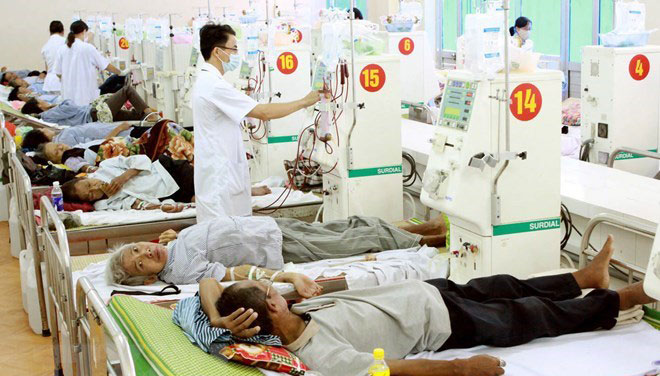
Illustrative photo (Photo: VNA)
The ministry reported that after the five-year implementation of the project on reducing hospital overload during 2015-2017, procedures for medical check-ups and treatment have been cut from 12-14 steps to 4-8 steps, helping save 27.2 million working days each year.
The health sector has also built and upgraded many hospitals and increased the rate of sick-beds per 10,000 people from 24.7 in 2012 to 31.4 in 2015 and 32.7 in 2016.
As many as 37 out of 39 central hospitals have committed to having no cases of sharing bed in the first 24-48 hours of hospital admission of patients.
At the same time, the ministry has made the best use of 17 central hospitals and 75 satellite hospitals in cities and provinces, while maintaining training courses and technical transfer for staff from grassroots hospitals.
Minister Tien said apart from satellite hospitals, the health sector has piloted the family doctor model, completed the network of communal medical centres and intensified preventive medicine.
She, however, pointed out patient overload in several central hospitals, and material facilities and human resources failing to meet public demands for health care.
The sector aims to basically deal with patient overload in hospitals by 2020, she said, adding that all hospitals at the central, municipal and provincial levels in major cities like Hanoi and Ho Chi Minh City are expected to promise to put an end to bed sharing in 2018.
All provincial hospitals are also set to join the satellite hospital project and benefit from technical transfer, she added./.
VNA
 Tay Ninh reviews preparations for investment promotion trip to Japan
Tay Ninh reviews preparations for investment promotion trip to Japan



